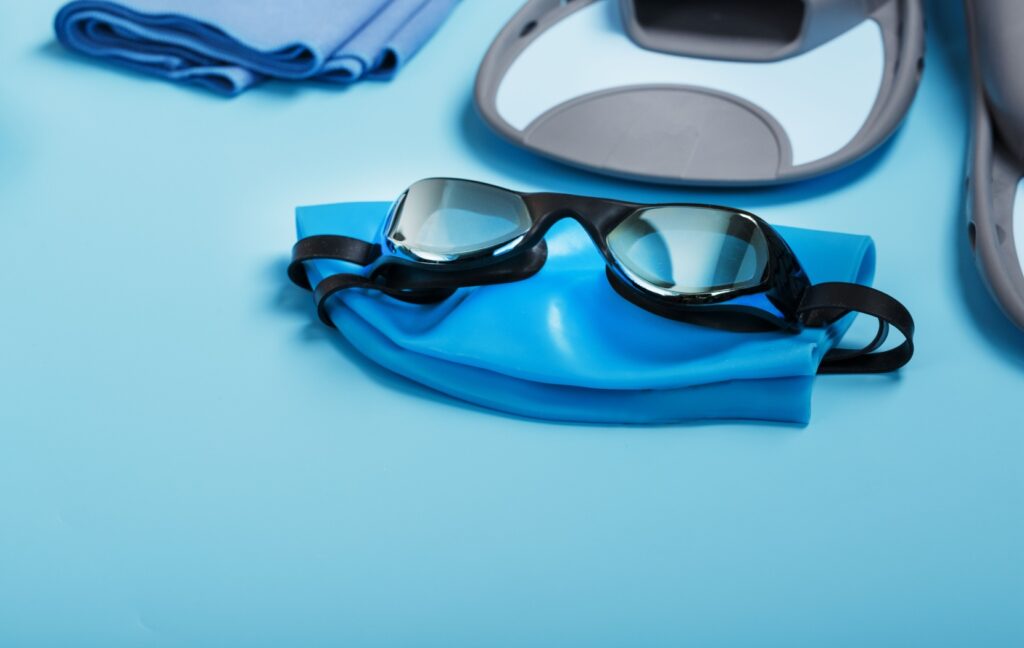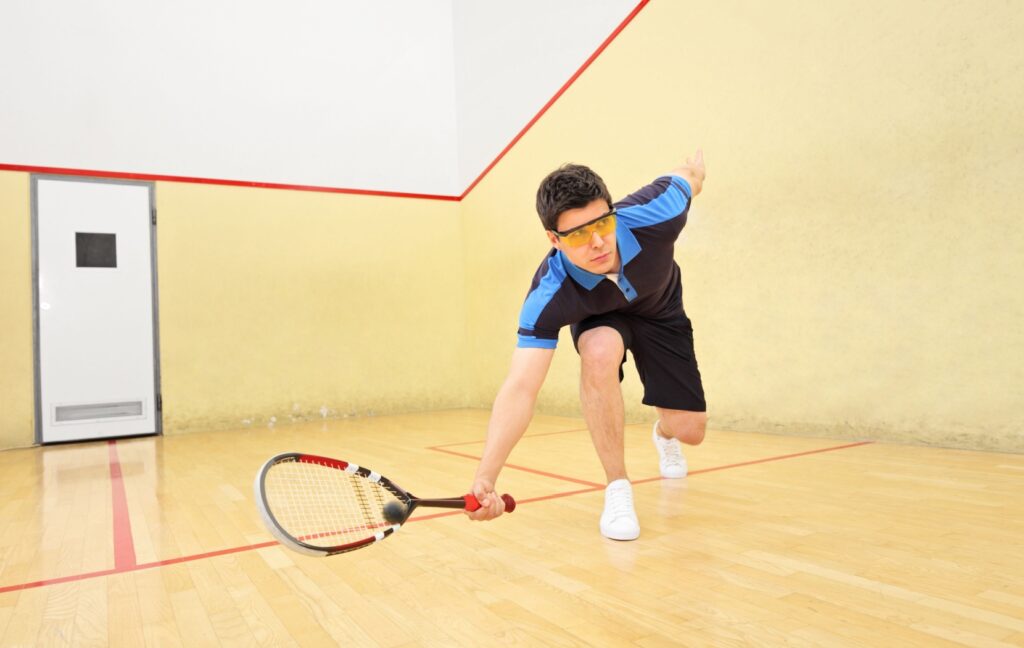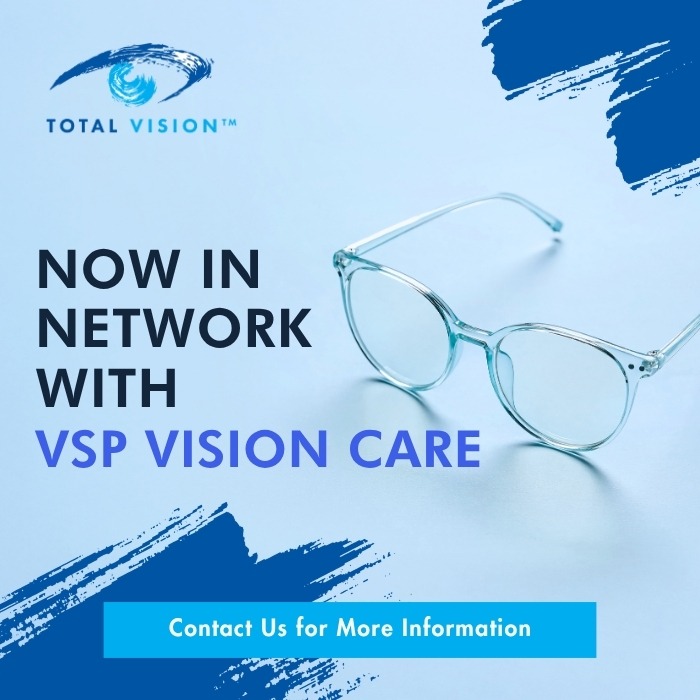Sports-related eye injuries send over 40,000 people to emergency rooms each year, yet 90% of these injuries could be prevented with proper protective eyewear. Whether you’re a weekend warrior or a competitive athlete, selecting the right eye protection is crucial for maintaining your vision and performance on the field, court, or track.
At Total Vision in Seal Beach, we understand that choosing protective sports eyewear involves more than picking up safety glasses at a sporting goods store. The right eyewear should provide adequate protection, proper fit, and clear vision tailored to your specific sport and visual needs.
Understanding Eye Injury Risks
Different sports present varying levels of risk to your eyes. High-risk sports include:
- Basketball
- Baseball
- Racquetball
- Hockey
In these sports, balls or equipment can cause direct impact injuries.
Medium-risk activities like tennis and soccer involve potential contact with balls, equipment, or other players. Even lower-risk sports, like cycling, can pose dangers from environmental factors like wind, dust, or UV radiation.
Serious injuries can result in permanent vision loss, requiring costly medical treatment and potentially ending athletic careers. Professional eye care providers recognize these risks and recommend protective eyewear as essential safety equipment, not optional accessories.
Types of Protective Sports Eyewear
There are a variety of eyewear options to protect your vision while playing sports. The right eyewear depends on what sport you’re playing and your personal vision needs.
Safety Glasses & Goggles
Standard safety glasses provide basic protection for sports with minimal contact risk. These lightweight options work well for cycling, running, or golf, offering protection from wind, debris, and UV rays. However, they may not provide adequate protection for high-impact sports.
Wraparound safety glasses offer increased coverage and better peripheral protection. The curved design helps prevent objects from entering around the sides of the frames, making them suitable for sports like tennis or softball.
Sport-Specific Protective Eyewear
Many sports require specialized protective eyewear designed to meet specific safety standards. Basketball and racquetball goggles feature polycarbonate lenses and secure strap systems to withstand high-impact collisions. Swimming goggles protect against chlorine and provide clear underwater vision.
Hockey players require face shields or cages that integrate with helmets, while cyclists benefit from specialized sunglasses designed to reduce wind resistance and provide optimal visibility in varying light conditions.
Prescription Sports Eyewear
Athletes who require vision correction face additional challenges when selecting protective eyewear. Standard prescription glasses often lack adequate protection and may break during athletic activities, creating additional hazards.
Prescription sports eyewear combines vision correction with proper protection, eliminating the need to wear contact lenses during activities. These custom solutions ensure optimal visual acuity while meeting safety requirements for specific sports.
Key Features to Consider
Lens Material & Impact Resistance
Polycarbonate lenses represent the gold standard for sports eye protection. This material provides superior impact resistance compared to regular plastic or glass lenses while remaining lightweight and comfortable. Polycarbonate naturally blocks 100% of harmful UV rays, providing additional protection during outdoor activities.
Trivex is another high-performance lens material that offers excellent impact resistance with superior optical clarity. While slightly heavier than polycarbonate, Trivex provides enhanced visual quality for athletes who demand the clearest possible vision.
Frame Design & Fit
Proper frame fit ensures both comfort and protection. Frames should sit securely without sliding during movement, yet remain comfortable for extended wear. The frame design should provide adequate coverage around the eye area without restricting peripheral vision.
Adjustable nose pieces and temple tips help achieve a customized fit for different face shapes and sizes. Some sports eyewear features interchangeable components to accommodate various users or playing conditions.
Ventilation & Anti-Fog Features
Fogging can severely impair vision during athletic activities, creating dangerous situations. Quality sports eyewear incorporates ventilation systems that promote airflow while maintaining protection. Anti-fog coatings and treatments help maintain clear vision during temperature changes or high-intensity activities.
Direct ventilation systems work well for low-impact sports, while indirect ventilation prevents debris from entering while still reducing fog buildup in higher-risk activities.

Sport-Specific Recommendations
Basketball & Racquet Sports
These high-impact sports require eyewear that meets ASTM F803 standards for protective eyewear. Look for wraparound designs with polycarbonate lenses and secure retention systems. The eyewear should provide full eye socket coverage without restricting vision or comfort.
Baseball & Softball
Fielders benefit from eyewear with specialized tints that enhance contrast against sky backgrounds, making it easier to track fly balls. Polycarbonate lenses are essential due to the high-speed impact potential of baseballs and softballs.
Water Sports
Swimming and water skiing require different approaches to eye protection. Swimming goggles should provide a watertight seal and UV protection for outdoor pools. Water skiing eyewear must stay secure at high speeds while protecting against water impact and spray.
Outdoor Sports
Cycling, running, and outdoor team sports require eyewear that addresses UV protection, wind resistance, and debris protection. Wraparound designs with impact-resistant lenses provide comprehensive protection while maintaining comfort during extended activities.
The Role of Professional Eye Care
Selecting appropriate protective sports eyewear requires professional expertise to ensure proper fit, adequate protection, and optimal visual performance. Eye care professionals can assess your specific visual needs, sport requirements, and facial anatomy to recommend the most suitable options.
Professional fitting ensures that protective eyewear provides maximum coverage without compromising comfort or performance. Improper fit can create gaps in protection or cause discomfort that discourages consistent use.
For athletes requiring vision correction, professional eye care providers can create custom prescription sports eyewear that eliminates the limitations of contact lenses or regular prescription glasses during athletic activities.
Protecting Your Vision for Peak Performance
Choosing the right protective sports eyewear requires careful consideration of your sport, visual needs, and safety requirements. Professional guidance ensures that you select eyewear that provides adequate protection while supporting your athletic performance and visual comfort.
At Seal Beach Eyes Optometry, our experienced team helps athletes of all levels find the perfect protective eyewear solutions. Schedule a consultation to discuss your specific needs and discover how proper eye protection can enhance both your safety and performance in your favorite sports.




